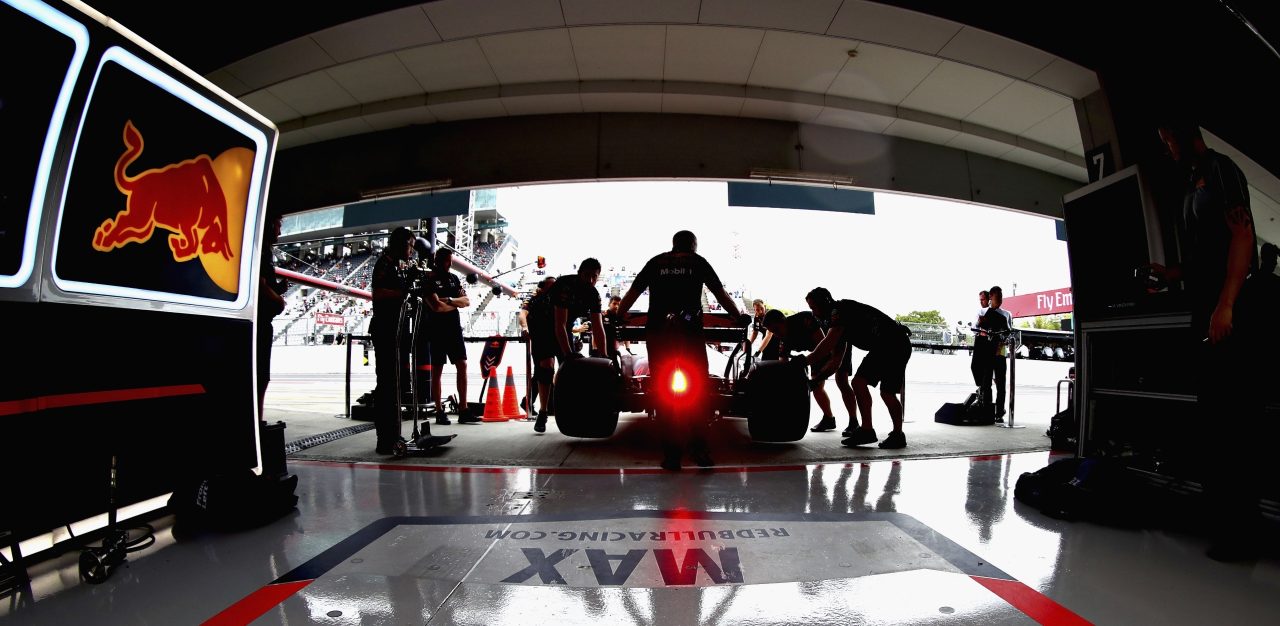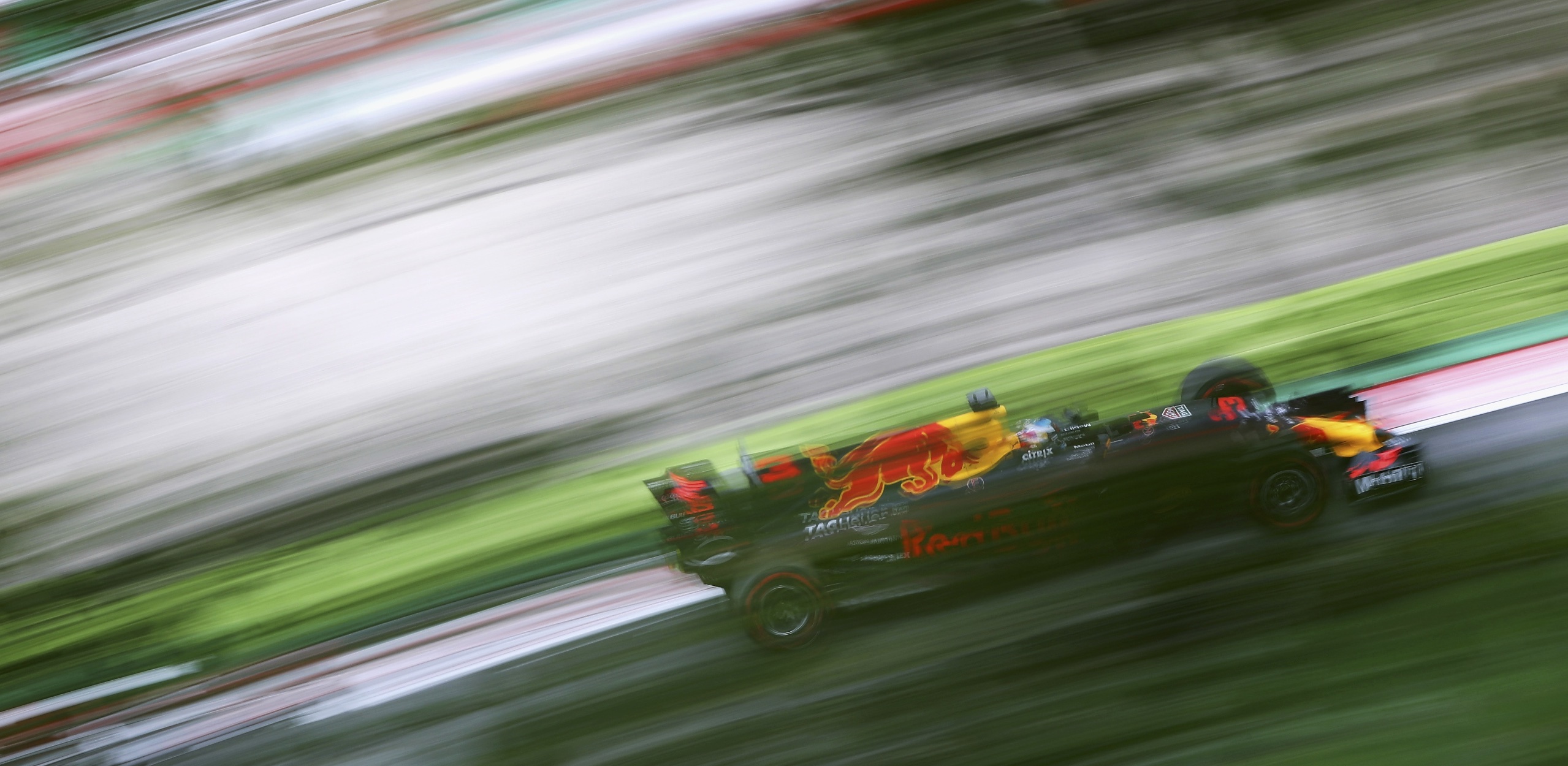
Just when Sebastian Vettel thought the collective lousy luck from his Singapore crash with his teammate Raikkonen and an engine failure during Malaysian qualifying had run its course, Vettel was blind-sided with a spark plug failure, leading to another retirement. This newest nightmare means he hasn’t won a race since returning from the F1 summer break a the end of August. The German will have to overcome this unexpected deflation to have any chance to overtake Hamilton.
Indeed, The Brit can lock up his fourth world championship title with a win in the US Grand Prix in two weeks, with Vettel finishing no better than sixth place.
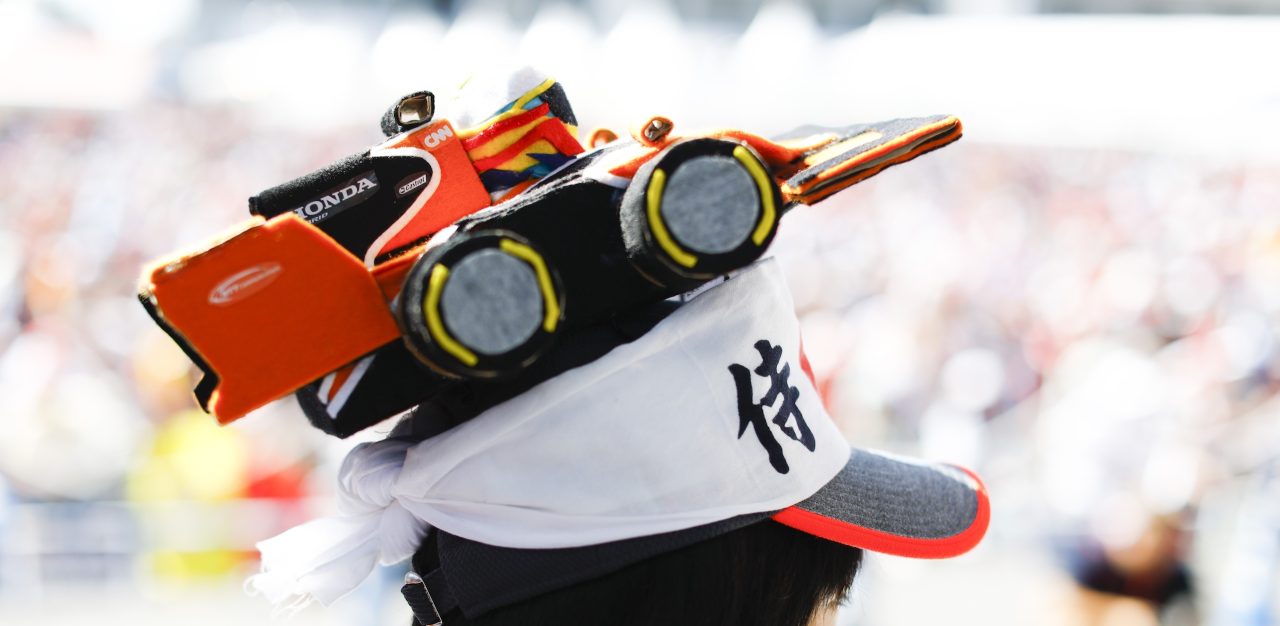
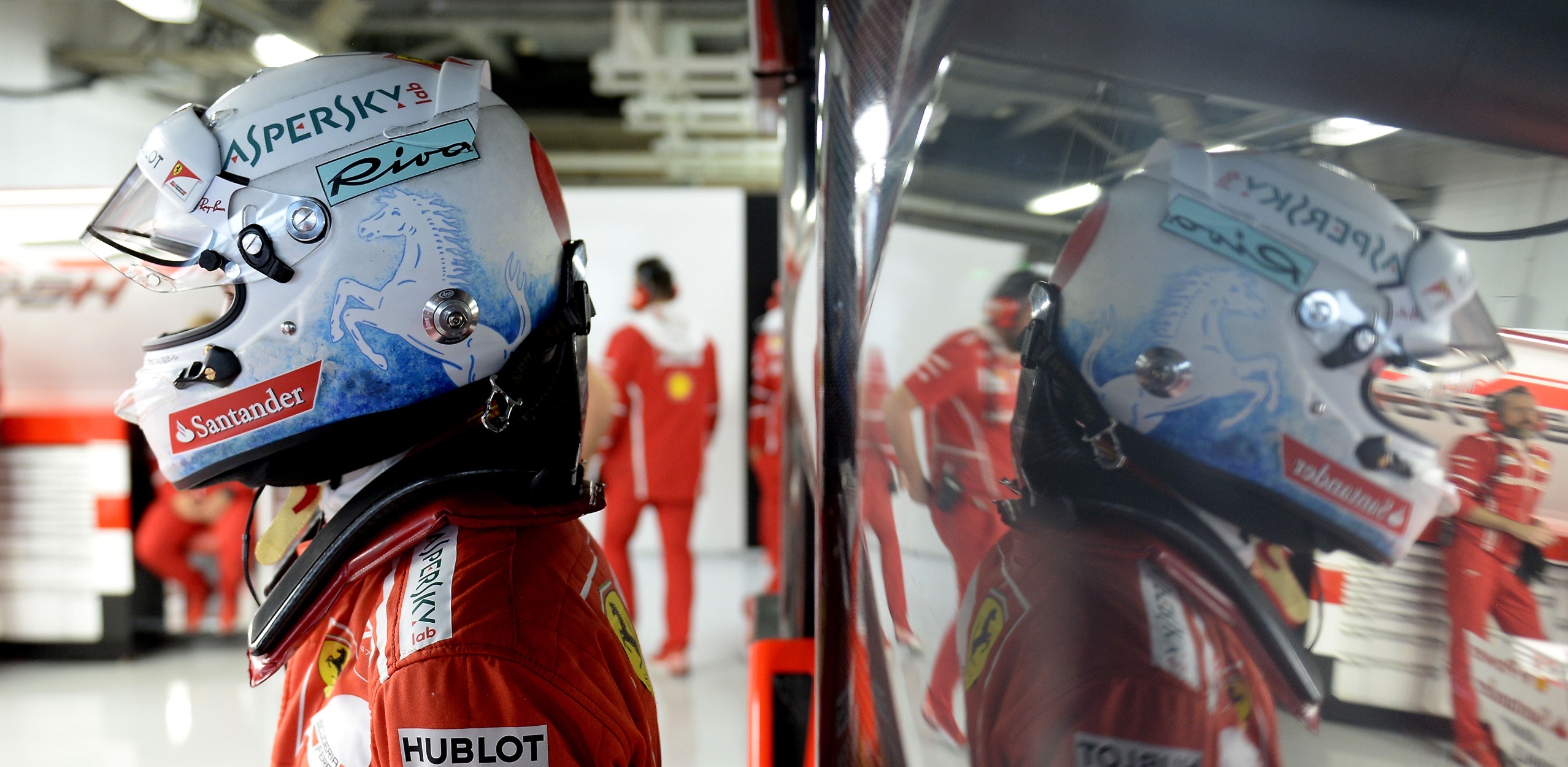
The Suzuka International Racing Course held its first race in 1987. Owned by Honda, Suzuka is comparatively narrow compared to newly built circuits, and sports a unique figure-8 layout filled with some of the best corners in F1, spread among 18 turns of the 5.807 km circuit. It begins in a clockwise direction and then switches to counterclockwise after the track crossover bridge.
It starts with high-speed Turn 1 which dives downhill with a tricky line that finds drivers fighting high lateral g-load as they slow while turning through the decreasing radius corner that marks the lowest point on the circuit. Following immediately is the S’-Corner complex, a string of highly technical left-right-left-right uphill curves similar to the Maggots-Chapel complex at Silverstone. Drivers must be pinpoint perfect though here, as each turn has a different radius and apex point which will cost them time if they’re even a bit off in their rhythm or accuracy.
At the top of the hill lies Turn 7, Dunlop Corner that throws the cars onto a long straight toward the difficult-to-see entry into the twin Degner 1/ Degner 2 Curves, (Turns 8-9). Misjudge the braking point at Degner 2 due to the subtle but balance-destroying undulations, and you’re instantly into the outside barriers, as the gravel runoff for the downhill apex turn attracts cars like a magnet.
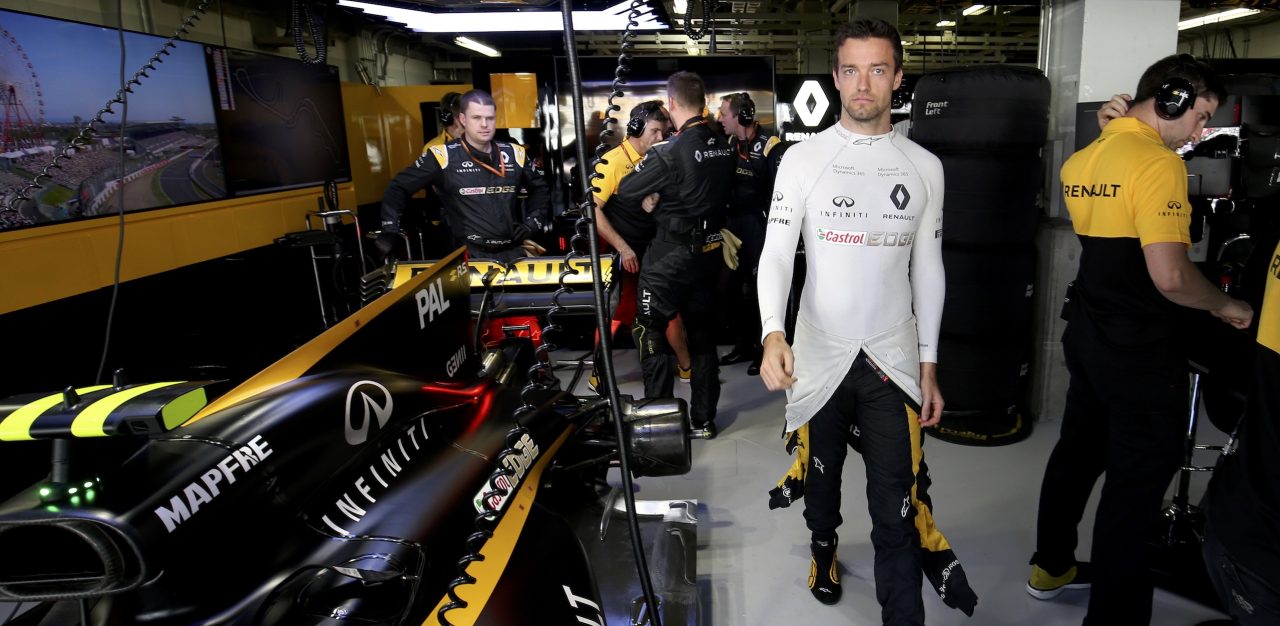
Drivers then approach the Hairpin Curve, looking to have the best corner exit possible onto the uphill curved straight that leads to the left-hand double apex Turns 13 -14, known as Spoon Curve. The exit is downhill, and then uphill for the rightfully fearsome 130R Turn, the flat-in-top-gear left that sorts those who have “IT” from those who might not. Up ahead is the Chicane and then acceleration onto the front straight for another lap.
A team that has a power advantage (read Mercedes) will pick up time on the long uphill straights. The S-Curve, both Degners and Spoon Curve demand nimble handling, precise steering and high downforce, (read Red Bull). Should a team have a wealth of both performance determiners (read Ferrari), they’ll be able to exploit their tyres long after their rivals need fresh rubber. After the faux pas of Singapore and the unfortunate engine woes of Malaysia, Ferrari needed Suzuka to regain their footing. Kimi Raikkonen arrived still holding the lap record, set in 2005, of 1:31.540. Sebastian Vettel has four victories on the circuit, and precisely the great memories he needed to hold off the surging Lewis Hamilton.
Jolyon Palmer will remember Suzuka with a twinge of melancholy; he learned that going forward, Renault will no longer require his talents, as they are inserting Carlos Sainz in the seat starting with the US Grand Prix in two weeks. Williams announced they would be testing both Paul Di Resta and Robert Kubica as a possible replacement for Felipe Massa, who stepped out of a two-week-old retirement to return to Williams after Valtteri Bottas was picked up by Mercedes just after the 2016 season ended. Massa wants to return next season, but Williams being Williams, the team has a different plan.
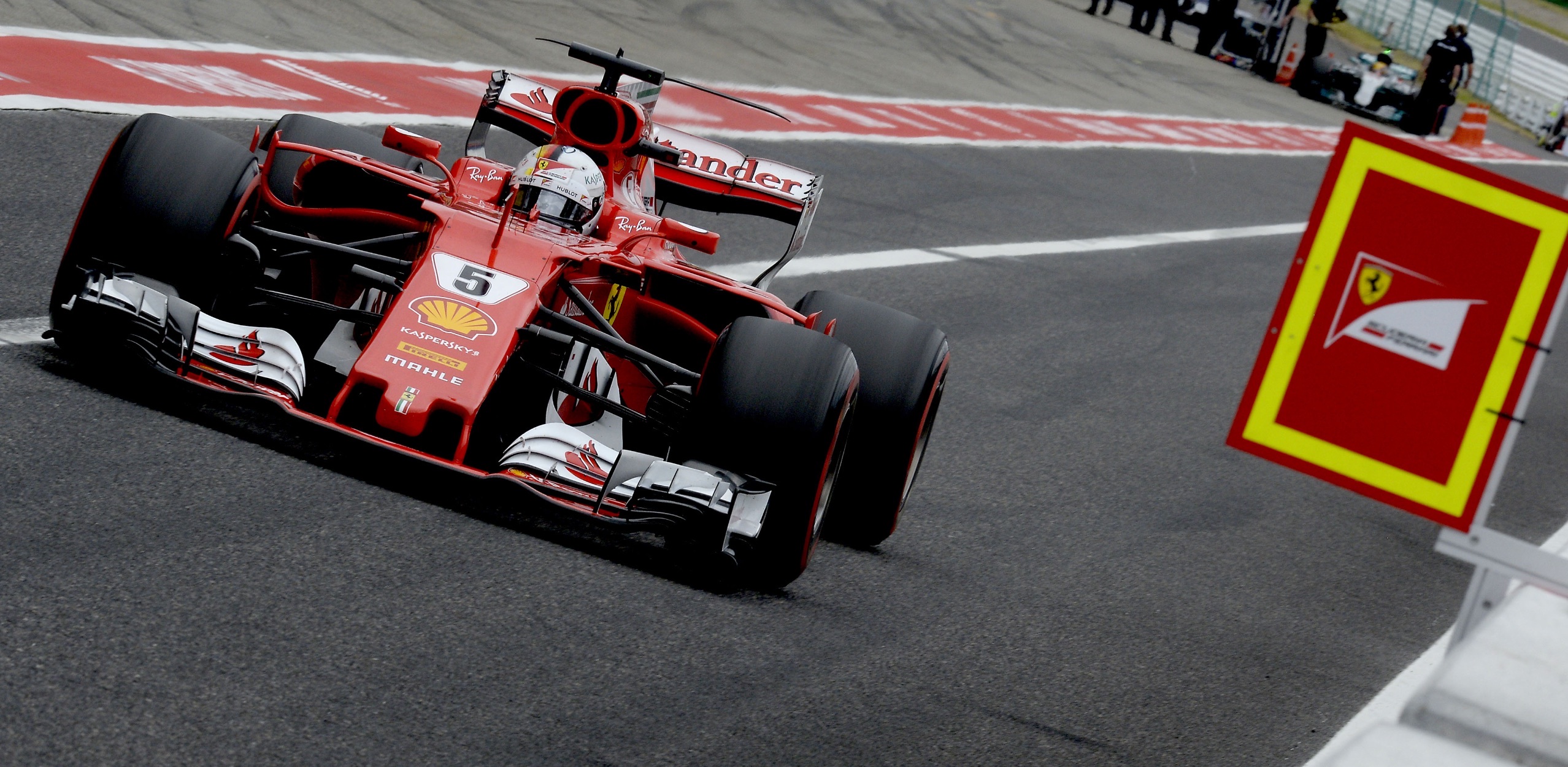
Both Ferrari’s had nervous run-ups to qualifying. Vettel had an off in Degner 2 without damage, but Kimi Raikkonen wasn’t as fortunate, going off at Degner 2 at precisely the same spot on entry as Vettel, the Finn’s SF70H, suffered a substantial hit that required a gearbox replacement and a five-place grid drop for the race. The cooler ambient temperatures of Q1 put Mercedes’ cars right in their sweet spot. Hamilton, on softs, put in a 1:29.047 to Vettel’s 1:29.01. Hamilton then fitted supersofts for Q2 and instantly put in a 1:27.9, the fastest lap ever turned at Suzuka.
Despite Vettel’s pushing, he was .663 back. Hamilton found even more for Q3, ultimately getting down to 1:27.301, leaving Vettel .452 back. Valtteri Bottas had qualified the second Mercedes second-quickest, at 0.35-seconds back, but he had a new gearbox fitted that brought a five-place starting penalty. Vettel moved up to the front row.
The Red Bulls of Verstappen and Riccardo filled the second row. For comparison, Hamilton’s Suzuka qualifying time was was 14.5-seconds faster than Ayrton Senna’s pole time in 1988, his first World Championship Title season.
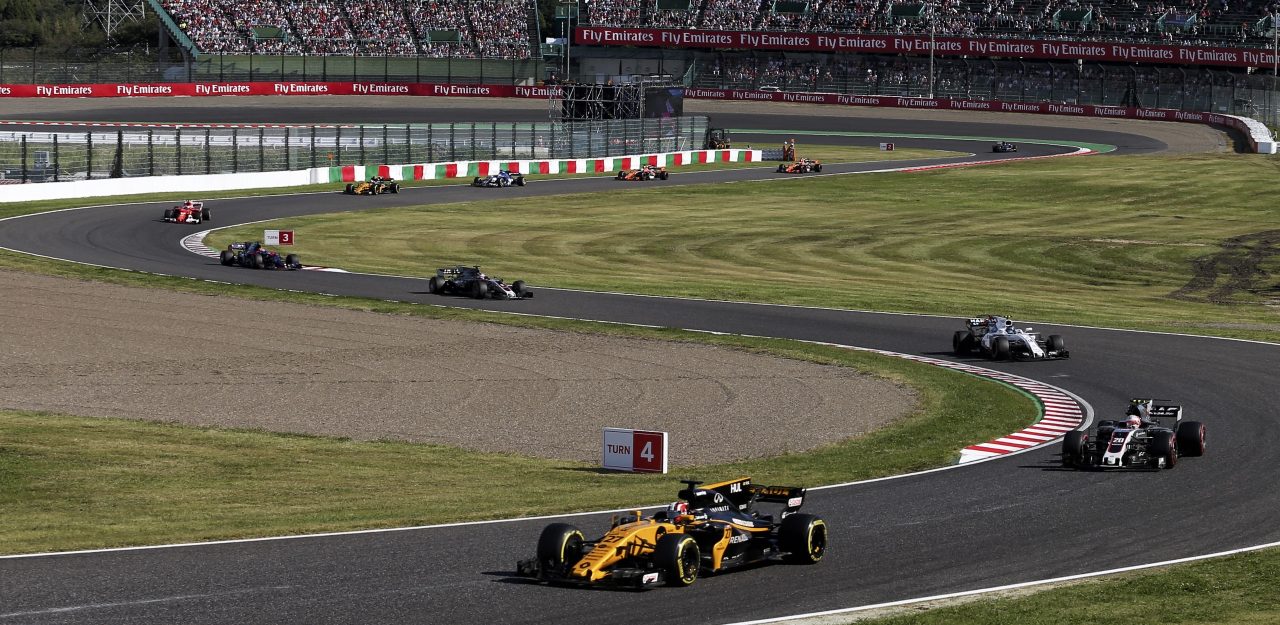
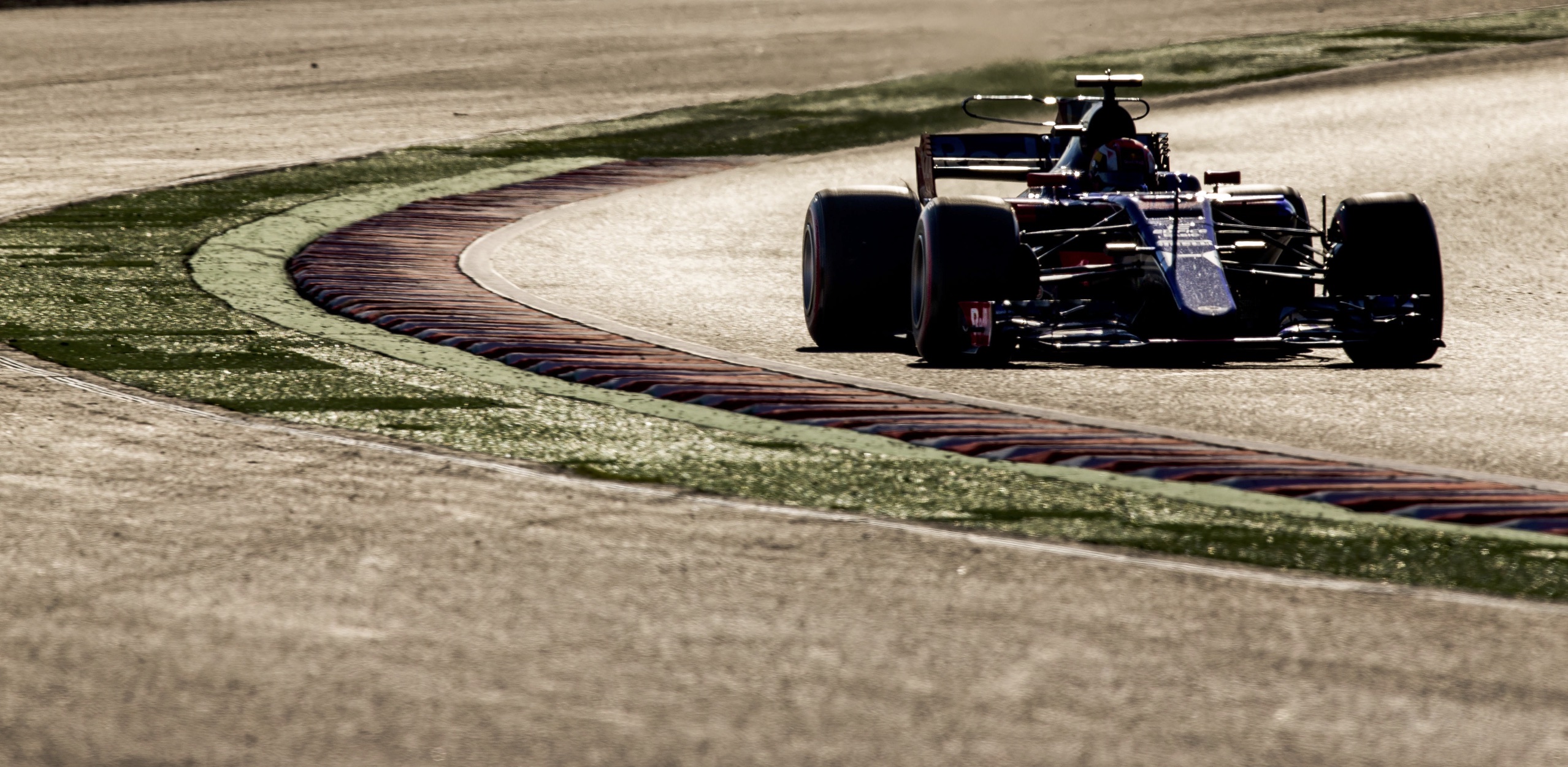
Overnight, the ambient temperature rose 15-degrees, making the race day track the warmest and driest of the race weekend. It was great news for Ferrari, as the Mercedes is quite the set-up prima donna; it’s tricky to adjust its suspension to carry the same balance forward on a much warmer track. Ferrari saw the ambient at 75-degrees with a track ambient of 109; that translated into a .2-second a lap gift. Given a competitive start Vettel, would be able to take and keep the lead as Hamilton’s tyres quickly overheated.
It wasn’t meant to be.
You would have been forgiven for hearing Ferrari’s car-pit radio feed during the reconnaissance lap and mistaking the message as a replay of Raikkonen’s transmission before the start of the Malaysian Grand Prix. Except for this time, it was Vettel saying he had no power. The technicians had taken the engine cover off in the garage before the warmup lap, and now they had replaced his Ferrari’s spark plugs on the grid and resealed the power unit. Within the rules, that’s all they could do.
At lights out, Hamilton grabbed the lead, as Vettel felt the engine lagging. Still, he had a great start all things considered and fell in behind the Brit. The Red Bulls of Verstappen and Ricciardo were already pressuring Vettel, with Verstappen passing Vettel under braking at the Hairpin Curve. Ferrari tech measurements showed Vettel was down 29 miles per hour at peak output. Already uncompetitive, Vettel’s plight would get worse. By the time the pit call came, Vettel had fallen back to eighth place. He was brought in to retire on Lap 4.
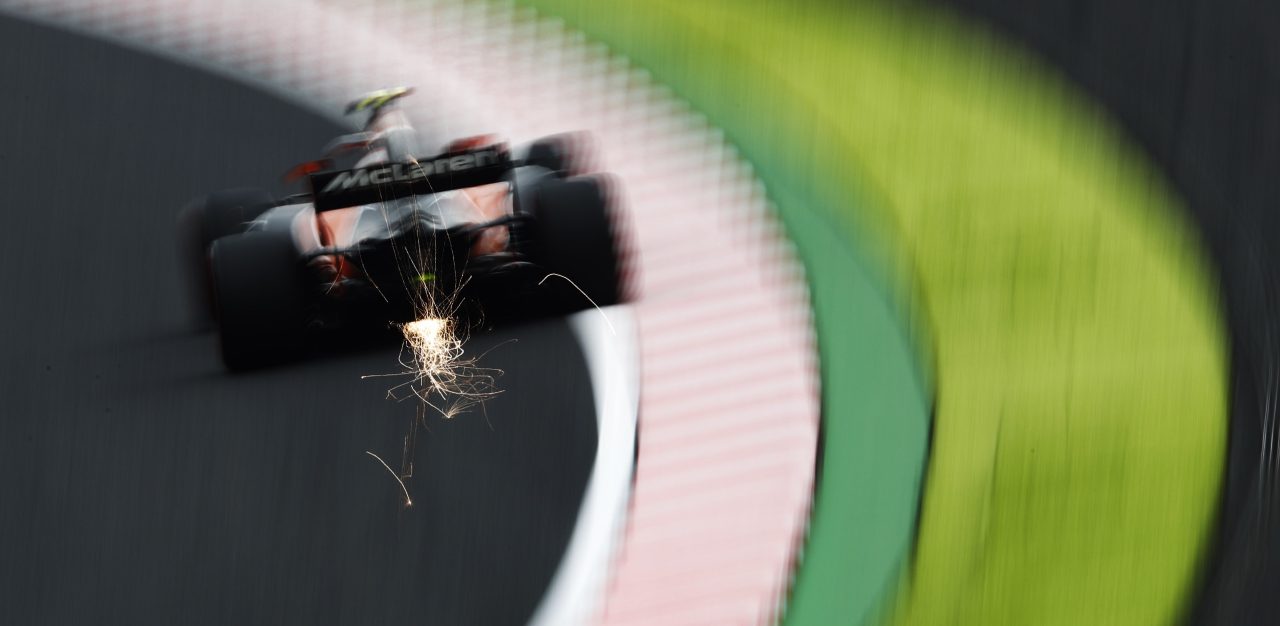
Behind one stricken Ferrari was another. On the first lap, Räikkönen, on the harder choice tyre, had tried to hang on the outside of Hulkenberg’s Renault around the outside of Spoon Corner, but eventually had to bail out on the runoff tarmac, falling down the order to 15th place as the train flew past.
Carlos Sainz’s lost the Toro Rosso’s back end in Degner 2, and cut through the gravel all the way to the barriers. The stricken car triggered a Virtual Safety Car during its retrieval. By Lap 3, the pack resumed racing, and Verstappen was instantly within 1.5-seconds of the leader, Hamilton. Verstappen would get no closer as Hamilton fought to extend the gap. The warmer track temperatures meant the Brit could only gain a few tenths on the Dutchman who, in the colder qualifying air had been a second slower. Verstappen let the gap expand to four seconds before pitting to change from supersofts to softs on Lap 21. Hamilton covered Verstappen’s undercut move on Lap 22.
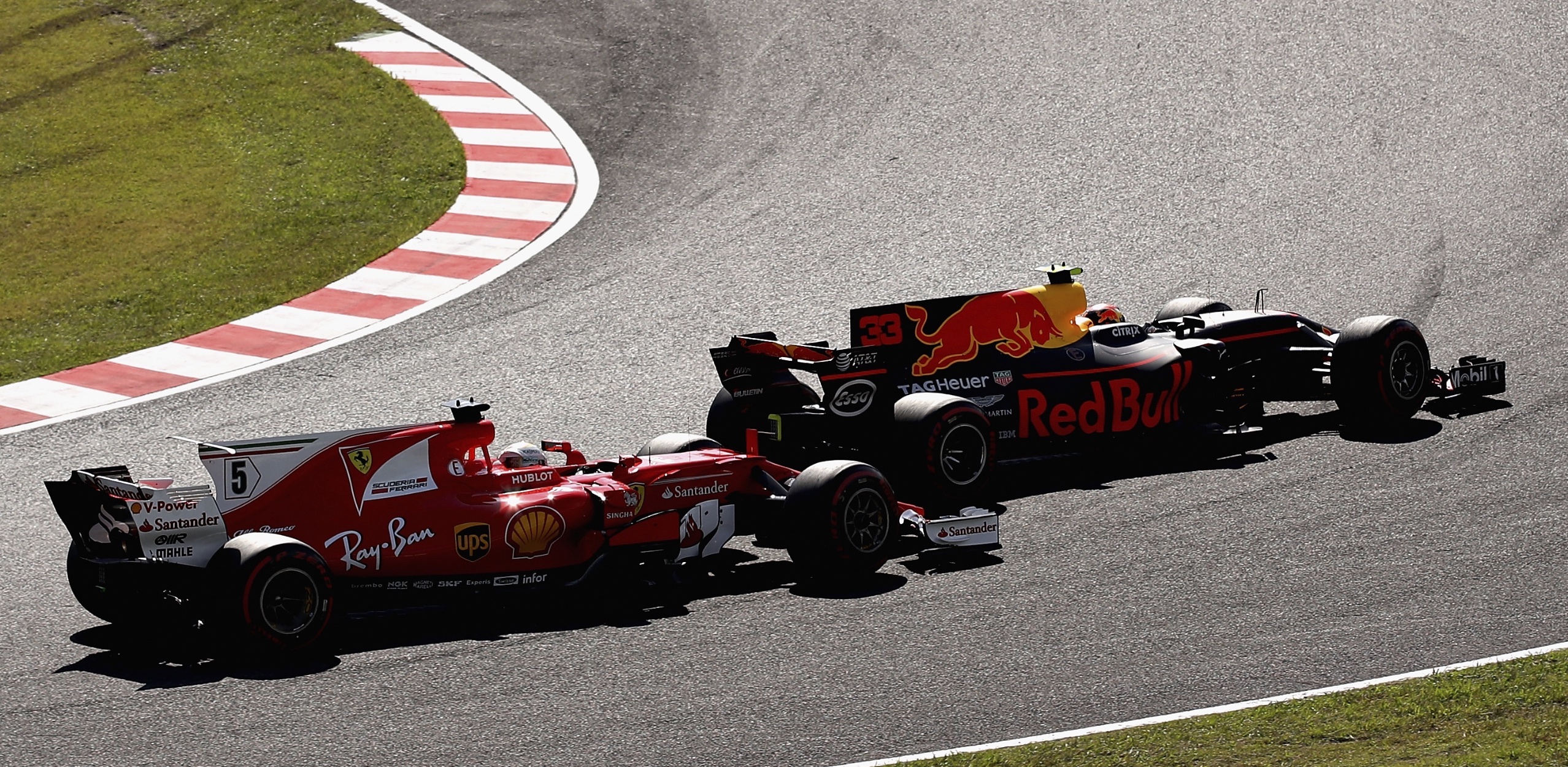
Also unexpectedly fast was Esteban Ocon, dragging his Force India up to third. Eventually, both Ricciardo and Bottas got past, but with 25 consecutive finishes, his talent shows shades of the 1970’s when a talented rookie from a small team could run up front with the established heavy hitters. He is due for a podium soon.
Bottas had remained out on worn tyres and now began to hold up Hamilton as Verstappen once again reeled in the Brit. He closed to almost a second before Bottas let Hamilton through, and set about holding up Verstappen. The Dutchman played it cool, conserving his tyres knowing that Bottas would have to stop.
While Verstappen chilled, Räikkönen was in full recovery mode, slicing his way up to eighth by Lap 10, after a second Virtual Safety Car session for was Marcus Ericsson’s crashed Sauber at the second Degner curve.
Bottas finally stopped on Lap 30, releasing Verstappen who again closed to within 1.5-seconds of Hamilton. By Lap 32, the three-time champion reported he’s struggling with wearing rear tyres. Verstappen had a secret of his own; his left-front tyre was beginning to blister from Lap 35-36. He adjusted his speed to remain within a three-second gap as he waited to use what was left of his tyres’ compound to catch Hamilton in the final half-dozen laps of the race.
Verstappen closed to within 2.2-seconds of Hamilton on Lap 39 and held steady until fortune struck. Lance Stroll’s Williams had a suspension failure on Lap 48, setting up the third VSC. It cleared on Lap 50, and Verstappen caught Hamilton struggling to reheat his front tyres cooled by the Safety Period.
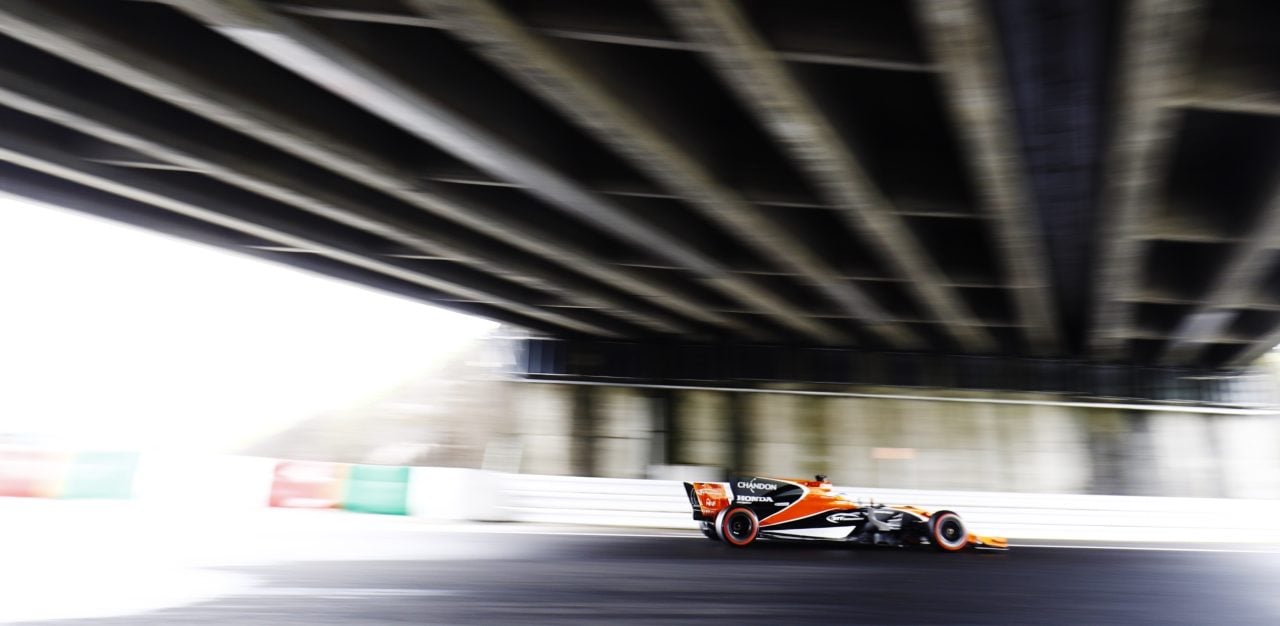
With three laps to go, Verstappen was within 1.4-seconds, a lap later it was down to 1.1-seconds. The pair came upon the Massa-Alonso duel for tenth place’s final points, with Hamilton slowing before passing Alonso, who continued to ignore both the blue FIA light in the cockpit and the blue overtaking flags at trackside. As Hamilton slid past, Alonso moved quickly back on the racing line, holding up Verstappen. Once past, Verstappen closed again with the gap down to 0.82-seconds just as Massa impedes Hamilton, but Hamilton was able to slide beneath him at the last instant going into Turn 1.
That’s all Hamilton needed to take the flag 1.2-seconds ahead of Verstappen.
Hamilton had voiced concern about a perceived engine vibration, but the team later dismissed any worries. Ricciardo took third, with Bottas finishing just a few feet off of the Australian’s gearbox. Räikkönen recovered to finish fifth, followed by points magnet Esteban Ocon, Force India teammate Sergio Perez, Haas teammates Magnussen and Grosjean and Felipe Massa, in tenth place, collecting the final point from Fernando Alonso.
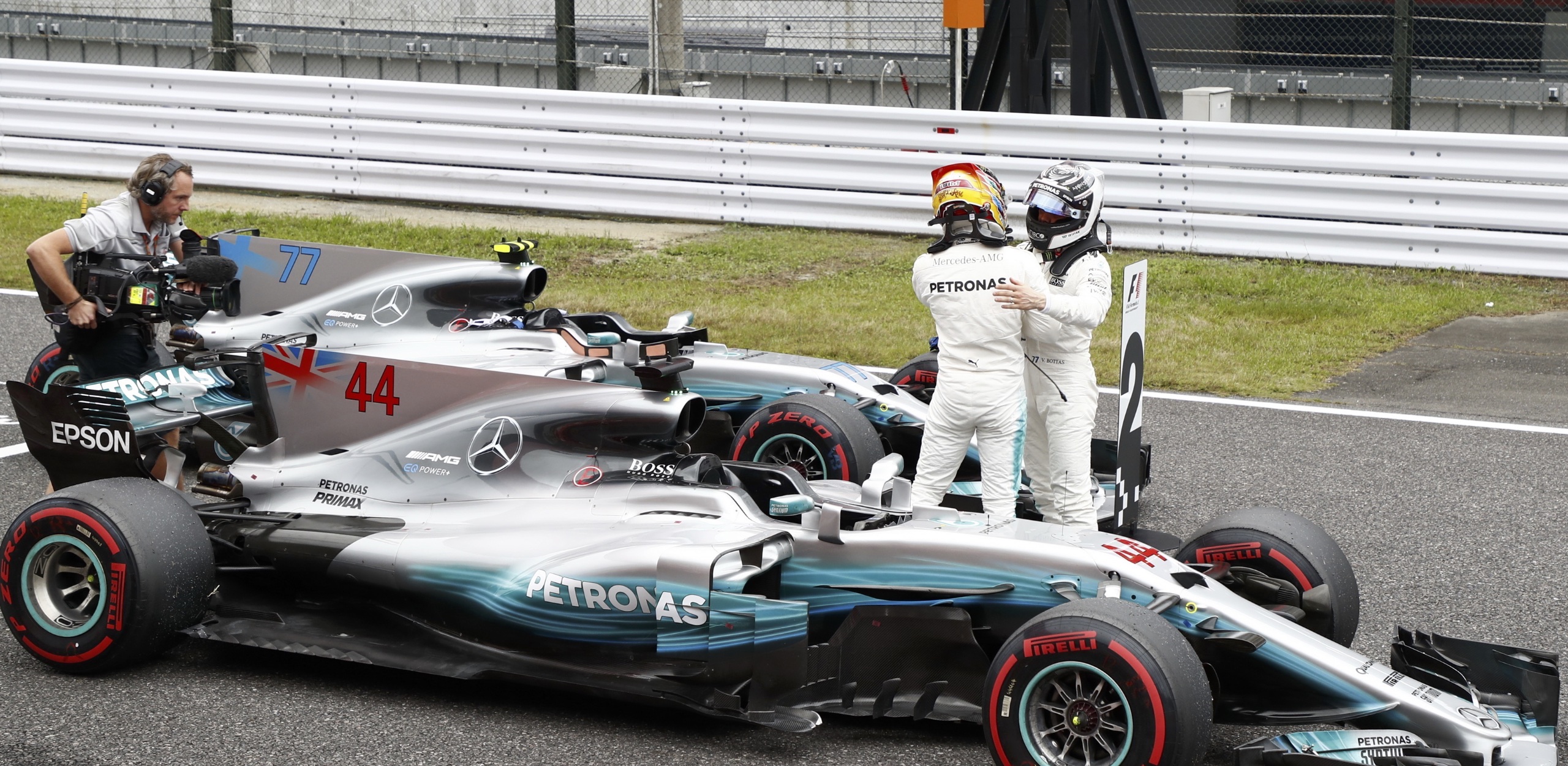
As if dropping out of the Japanese Grand Prix wasn’t gut-wrenching enough for Sebastian Vettel, he received a reprimand for missing the pre-race national anthem choosing instead to stand by his mechanics as they worked through the spark plug fiasco that would eventually ruin his race. It was his second reprimand of the 2017 season; should he gain one more, he’ll be given a 10-place grid penalty by the FIA.
Now it’s on to the United States Grand Prix in Austin, in two weeks time.
